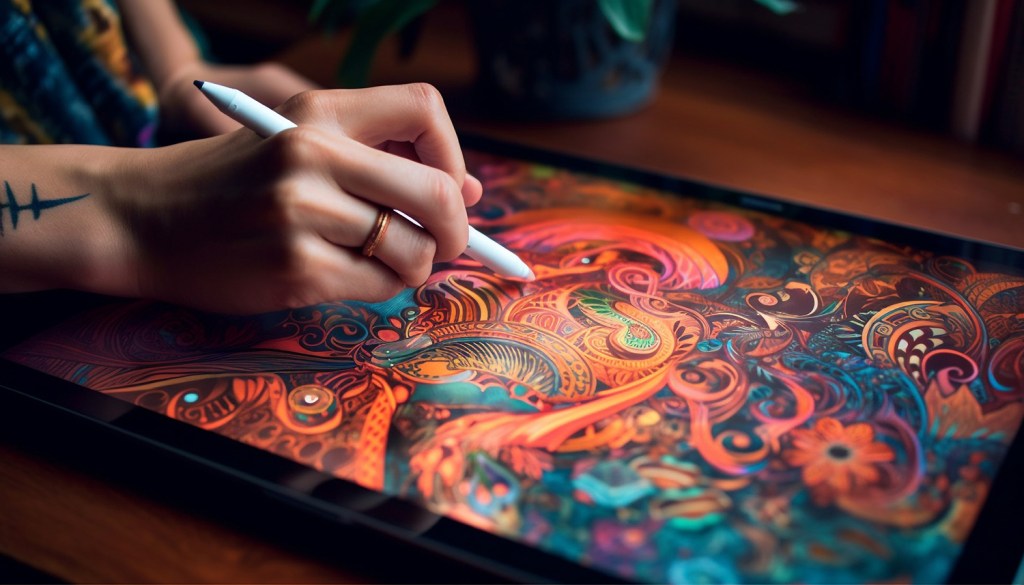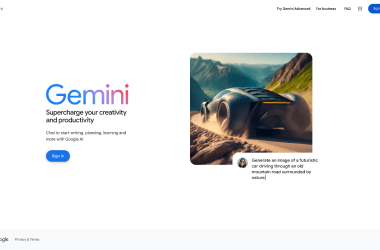Updated: Jun 27, 2024 By: Marios

Imagine a world where the barrier of coding doesn't stand between you and your best design work. No-code tools are revolutionizing the industry, empowering designers to execute ideas faster than ever before, without getting tangled in complex programming syntax.
Design workflows get a shot of efficiency with these intuitive platforms that eliminate repetitive tasks and smooth out integration hiccups. From crafting striking visuals to converting presentations into shareable documents, no-code applications offer streamlined solutions for creative professionals. Let’s step through some essential no-code tools reshaping how designers approach their craft.
Decoding No-Code: The Rise of User-Friendly Design Tools
Time is the currency of productivity in digital design, and no-code tools are like a newfound wealth. They've disrupted the traditional notion that creating digital masterpieces hinges on deep coding knowledge. This radical shift has cleared the path for designers to focus more on their creative instincts rather than technical barriers.
What's driving this upswing? Three factors stand out: accessibility, adaptability, and agility. These tools have democratized design by offering drag-and-drop interfaces, pre-built templates, and responsive elements that respond in real time to user input.
But it's not just about looks; efficiency matters too. With these platforms, updates get deployed instantly across multiple projects, sidestepping the tedious manual adjustments of yesteryears' workflows.
From Ideation to Execution: No-Code Tools that Empower Designers

In the heart of a designer's workflow, no-code tools beat like a drum, signaling rapid progression from concept to reality. Monuments of creativity now rise without the once-requisite scaffolding of intricate coding. Adobe XD and Sketch exemplify this shift—designers now mold user interfaces and prototypes with independence, unfettered by the need for developer intervention.
This autonomy stretches beyond mere mock-ups. With platforms such as Webflow, designs blossom into fully functional websites in the absence of traditional coding labor. This leap forward not only streamlines production but also injects agility into post-launch edits and scaling efforts.
Thus, no-code tools serve not just as a convenience but as catalysts for empowerment. By placing more directional control in designers' hands across the entire creation cycle, these platforms are enablers of both artistic freedom and enhanced efficiency in today's fast-turnaround environment.
Painless Publishing: Transforming Presentations with Canva

Document preparation, often a painstaking process, is simplified by no-code tools that cleanly bridge the gap between design and distribution. Canva emerges as a frontrunner in this arena, especially when the task at hand is to turn PPT into PDF. The simplicity of this conversion process is a testament to the tool's focus on user-centric design.
What once involved multiple steps and software can now be accomplished within a single platform. Designers can shift from tweaking a slide's aesthetics directly to securing its content in a universally accessible format – all without compromising on quality or design integrity.
This is not mere convenience but transformational capability. By elevating document management to such heights of efficiency, Canva ensures that time spent on conversion becomes an investment in refining one’s creative work instead of wrestling with technical complexities.
Integration Without Intimidation: Bridging Applications Seamlessly
Strong design work hinges not only on creativity but also on the seamless integration of tools and systems. Here, no-code platforms partner harmoniously with managed IT services to ensure a smooth workflow where data moves without friction between software ecosystems. It's this alliance that maintains the pulse of productivity.
Managed IT solutions play the linchpin role, ensuring that these no-code solutions mesh well within an organization's existing digital framework. They orchestrate the backend symphony so designers can dance to the rhythm of innovation upfront, unencumbered by integration concerns. With their expertise, application meshes are not just possible; they are perfectly tuned.
Acknowledging this synergy is crucial for designers who rely on a suite of applications to bring their visions to life. The right managed IT services can serve as catalysts for maximum efficiency within no-code environments, amplifying creative potential and technical performance simultaneously.
Workflow Automation: Syncing Your Design Universe Without a Hitch

Efficiency in design isn't merely a function of talent; it's also the byproduct of streamlined workflows. No-code tools are pivotal in crafting these efficient pathways, automating repetitive tasks that once gnawed at the clock. Zapier stands as a sentinel at this junction, where automation meets creativity, silently guiding data and tasks between web apps with near-magical ease.
In an automated workflow powered by such tools, designers find themselves liberated from the mundane. They set triggers and actions once—then watch as designs leap from conception to completion, unfettered by manual drudgery. It’s like setting dominoes in motion; one push and everything falls into place with satisfying precision.
This new reality—a landscape where routine tasks manage themselves—allows designers to reallocate their most finite resource: time. In doing so, they immerse deeper into the creative process, ensuring that each project receives their full attention and expertise without mundane interruptions.
Sharpening Efficiency: Time-Saving Features of No-Code Platforms
In design, every moment counts. No-code tools don't just save time—they multiply it. By offering built-in analytics and collaborative features app, platforms like Figma turn the once-siloed act of creation into a symphony of synchronized efforts. Real-time collaboration becomes second nature, with team members contributing concurrently from any location.
Responsive design capabilities further condense the work cycle. Designers can now craft a single layout that adapts effortlessly across different devices—a task that previously demanded distinct designs for each screen size. This adaptability is not just about visual fidelity; it conserves energy for broader strategic thinking and bold experimentation.
By embedding options for version control and instant feedback loops into their core, no-code tools have become indispensable allies in enhancing productivity. As a result, myriad hours are reclaimed—hours that designers can invest in refining their artistry or expanding their professional horizons.
Design Unleashed: Embracing the No-Code Revolution
The verdict is clear: no-code tools are not just a passing trend but pivotal assets in the designer's toolkit. They stand for more than simplicity—they symbolize an era where creativity knows no bounds and efficiency is always within reach.



